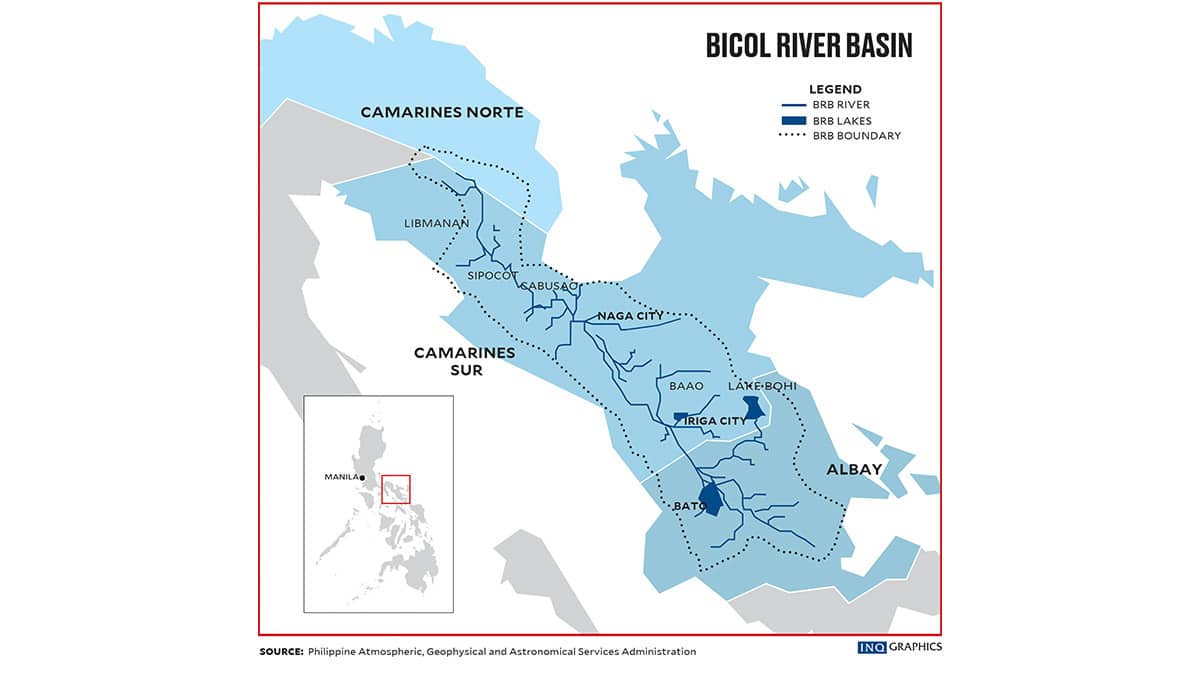
“The floods are not receding. But that’s the proverbial problem of the Bicol River Basin. We should really give it a lot of thought, what are we going to do in the long term because you cannot expect any changes. The next time it rains, it will be the same situation again. So we have to find a long-term solution,” Marcos said on Saturday in Camarines Sur, one of the first provinces lashed by Kristine on Tuesday.
READ: Pagasa: Rains over parts of Luzon due to trough of Kristine
In a situation briefing at Naga City Hall, Marcos said “new solutions” are needed as climate change worsens the frequency and intensity of extreme weather events.
The President checked on the condition of the evacuees at Barangay Causip in Bula town and had a short briefing with local officials led by Camarines Sur Gov. Vincenzo Renato Luigi Villafuerte.
Also with the President were Defense Secretary Gilbert Teodoro Jr. and Interior Secretary Jonvic Remulla.
P30-M, P50-M checks
The President also handed a P30-million check to Naga City Mayor Nelson Legacion and another P50 million to acting Albay Gov. Baby Glenda Bongao.
On his Facebook and Instagram pages, the President said he also gave P50 million each to the provincial governments of Camarines Norte and Camarines Sur.
The Bicol River is the eighth largest river system in the country, with a basin area of 3,770 square kilometers. It drains into the southwestern part of Luzon and passes through Camarines Sur, Albay and Camarines Norte.
Initial data showed that Kristine dumped about two months worth of rainfall on Bicol in just one day. The ensuing, massive floods affected almost 2 million people in the region alone.
“(T)he volume of water is too much, the existing flood control (system) cannot handle it. We didn’t have a forecast like this, so this is really climate change. This is all new. So we have to come up with also new solutions,” he said.
Marcos recalled that a major government initiative for the region—the Bicol River Basin Development Program—was launched in the 1970s during the presidency of his late father and namesake.
Funded by the United States Agency for International Development, it was designed to mitigate chronic flooding and had other multiple components to improve the local agriculture, infrastructure, education and health-care services, he added.
But it was discontinued “when the government changed in 1986,” he said, referring to the year when Ferdinand Sr. was deposed and the Marcoses were forced to leave the country by the Edsa People Power Revolution.
Citing the latest calamity, Mr. Marcos said there was a need to revisit the program.
According to Public Works Secretary Manuel Bonoan, the program was “updated” in July as the Bicol River Basin Flood-Control Project.
Bonoan said the project would be funded through a loan from South Korea’s Exim Bank, with the civil works expected to start in 2026. —with a report from Ma. April Mier-Manjares